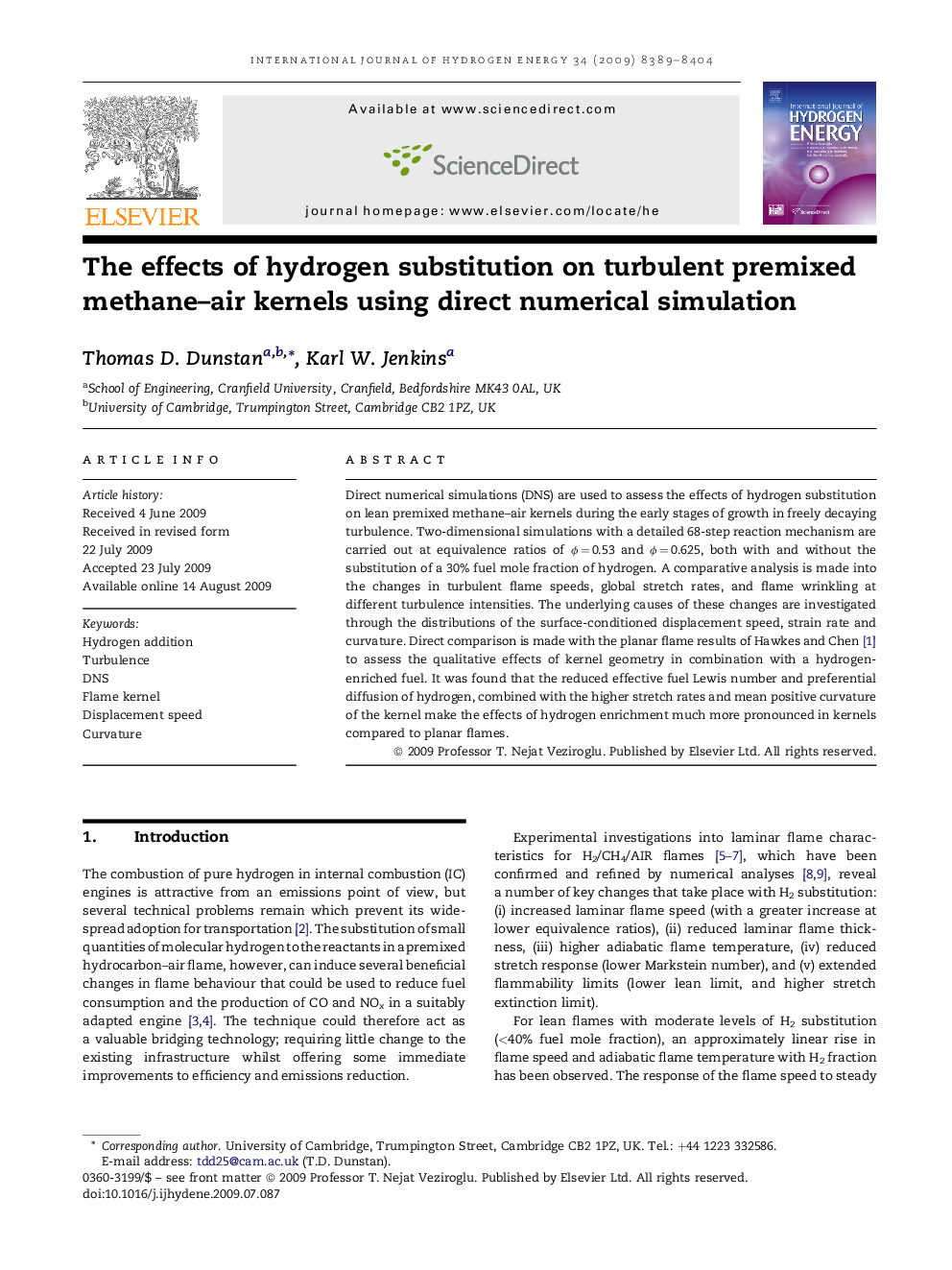| Article ID | Journal | Published Year | Pages | File Type |
|---|---|---|---|---|
| 1283098 | International Journal of Hydrogen Energy | 2009 | 16 Pages |
Abstract
Direct numerical simulations (DNS) are used to assess the effects of hydrogen substitution on lean premixed methane-air kernels during the early stages of growth in freely decaying turbulence. Two-dimensional simulations with a detailed 68-step reaction mechanism are carried out at equivalence ratios of ÏÂ =Â 0.53 and ÏÂ =Â 0.625, both with and without the substitution of a 30% fuel mole fraction of hydrogen. A comparative analysis is made into the changes in turbulent flame speeds, global stretch rates, and flame wrinkling at different turbulence intensities. The underlying causes of these changes are investigated through the distributions of the surface-conditioned displacement speed, strain rate and curvature. Direct comparison is made with the planar flame results of Hawkes and Chen [1] to assess the qualitative effects of kernel geometry in combination with a hydrogen-enriched fuel. It was found that the reduced effective fuel Lewis number and preferential diffusion of hydrogen, combined with the higher stretch rates and mean positive curvature of the kernel make the effects of hydrogen enrichment much more pronounced in kernels compared to planar flames.
Related Topics
Physical Sciences and Engineering
Chemistry
Electrochemistry
Authors
Thomas D. Dunstan, Karl W. Jenkins,
